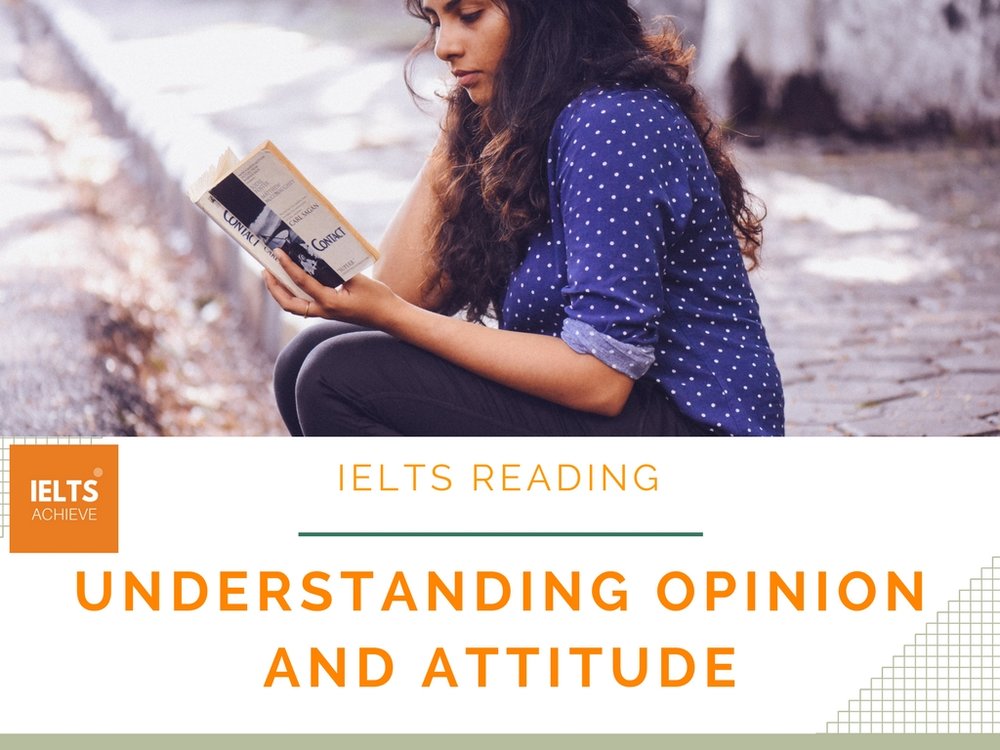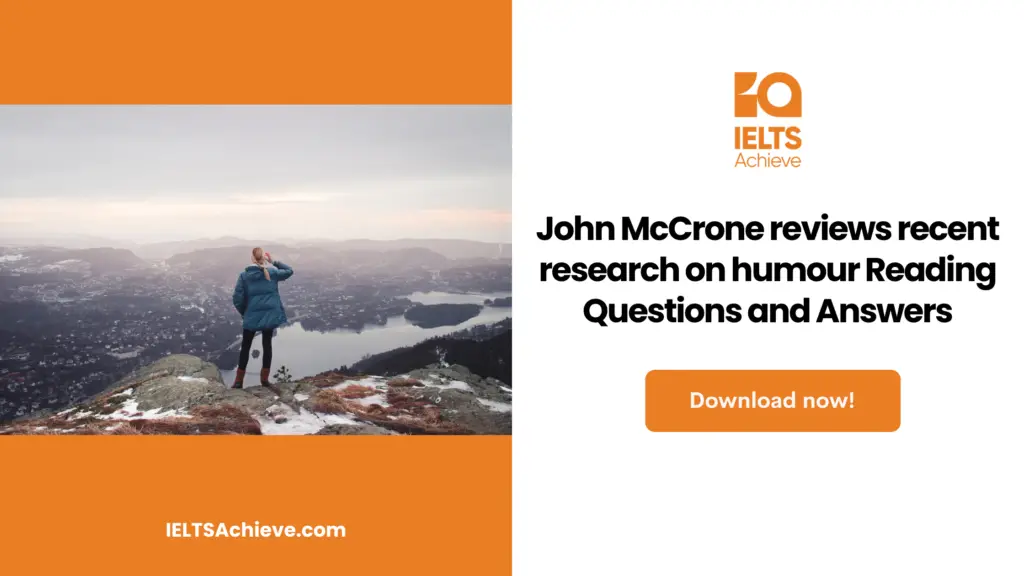
In this post, we will be looking into how you can understand the writer’s opinion and attitude in a text.
When you read a book, article, etc, you should be able to understand how the writer feels or thinks about a subject. For example, in an article or blog about travelling, you may read views on certain places and how they feel when going there. This can help you to understand how they explain their opinions and views through the language they use.
Understanding attitude and opinion are important skills because writers do not always clearly state how they think or feel.
TIP >> Read reviews or opinions from opinion sections of newspapers like The Guardian or The Washington Post.
When reading an opinion piece, think about the following questions;
- How does the writer share their opinion – is it obvious?
- What language/vocabulary do they use?
- How can you tell what they are thinking or feeling?
Exercise 1
Look at the opinion piece below from The Guardian – how does the writer share his opinion about the topic?
Answer the following questions (Yes, No, Not Given)
Skim the text and see if the statements below agree with the claims of the writer >>
- YES – if the statement agrees with the views or claims
- NO – if the statement contradicts the views or claims
- NOT GIVEN – it is impossible to say what the writer’s views/claims are
10. The hospital staff were mainly from the UK
11. The surgical procedure the writer needed was created by a Doctor from the Philippines
12. This is the second time the author has had heart surgery
13. Officials should give more funding to the NHS and employ more people from around the world
I’m having heart surgery in a few hours. I fear for myself – and the NHS – By Giles Fraser
Last Sunday afternoon, on the feast day of Pentecost, I had a heart attack. A pain seized my chest and coursed down my left arm. Maybe, as a middle-aged, overweight diabetic, I shouldn’t have been all that surprised. But I was. Within minutes of phoning 101, I was on my back in St Thomas’ hospital, central London, hooked up to beeping machines, sweaty and scared.
The doctor who looked after me in A&E had been up all night, saving the lives of men and women who had been stabbed by terrorists around Borough Market. And though it feels crass to say, I am going to say it anyway: he was Muslim. And French. The off-duty Australian nurse who rushed to help the dying, and was murdered for her compassion, was also from this NHS trust. On the ward, those who could stand for a minute’s silence to remember her.
The word multicultural is no longer fashionable. But I don’t know what other words to use to describe the feel of St Thomas’. The nurse who wheeled me over to x-ray was Portuguese. The woman who made me a cup of tea was Brazilian. One of my consultants wore a turban. The other was Thai. My night nurse was from Essex. And the doctor doing my angiogram was, I guessed, from Nigeria. “How are you?” she asked. “Wahala,” I replied, knowing the Yoruba for trouble. She laughed. I had guessed right.
The Pentecost story from the book of Acts tells of the disciples being miraculously understood across many languages. The reading has a wonderful rhythm to it, familiar to churchgoers. They were understood by “Parthians, Medes and Elamites; residents of Mesopotamia, Judea and Cappadocia, Pontus and Asia, Phrygia and Pamphylia, Egypt and the parts of Libya near Cyrene; visitors from Rome (both Jews and converts to Judaism); Cretans and Arabs”.
On Sunday morning I was preaching about how people were united across cultures, in a common cause to bring life to others. By the afternoon I wasn’t just talking about it, I was living it. Pentecost is the original feast day of multiculturalism. And, in this country at least, the NHS is its most impressive secular institution – though the religious and the secular are not entirely unconnected. This hospital was founded by monks in the 12th century. And it carries a saint’s name that time cannot unfrock.
So on Friday, as others are digesting what flavour of government we are going to be living under for the next five years, I will be oblivious to politics, undergoing triple heart bypass surgery (by a Greek surgeon). It turns out that the arteries around my heart need replacing.
Though pretty commonplace these days, this amazing surgery was pioneered by an Argentinian doctor, René Favaloro. And his is a remarkable story. Having opposed the right-wing military regime of President Juan Perón, he was refused a prestigious medical position and instead set up a practice for the poor, after which he emigrated to Cleveland, Ohio, even though he spoke little English.
In October 1967 he operated on a vegetable wholesaler from DeKalb, Illinois. This man’s coronary arteries were so dangerously blocked that he had been told by his family doctor that he had no more than three months to live. Offered experimental surgery by Favaloro, the patient agreed. Favaloro opened up the patient’s ribcage, took a vein from his leg and used it to bypass the blocked section of artery around the heart. It worked. Fifty years later, this is pretty much the same operation that I’m about to undergo.
As hospital reading, my wife brought me The Matter of the Heart, Thomas Morris’s new book on the history of pioneering heart operations. The story begins with a second world war US army surgeon working to remove shrapnel from soldiers’ chests in a shed in the Cotswolds and ends with the surreal prospect of the 3D printing of hearts. For someone in my condition, it’s on the edge of being too much information. And it doesn’t attempt to get to grips with the symbolic nature of the heart: of how it developed a connection with the emotions, of why it makes sense to say that “I love you with all my heart” or that someone with courage has a big heart. Certainly, a heart operation feels viscerally different from an operation, say, on the liver, though both can kill you. Perhaps it is the spasmodic rhythm of the heart’s beating that suggests the source of life itself. It feels almost creepy that someone will soon be holding my heart in their hands.
“In a lifetime of 80 years, the heart beats around 3bn times,” Morris explains. I calculate that if I want to live well past 80, my replumbed heart will have to shift another 100m litres of blood. That’s around 40 swimming pools full. Preferably, I don’t want it to pack up before then. The vegetable salesman lived for another 26 years after Favaloro changed his pipes. I’d like to do a bit better than that.
When I come round from surgery – prayers and crossed fingers all welcome – I may be in a ward facing parliament. Whichever government takes up residence over there, it absolutely has to be one that treasures this extraordinary, wonderful, beautiful National Heath Service. I’m obviously being emotional about it. And biased. But the blood supply of the NHS is both funds and staff – and to those who would use Brexit to restrict the flow of immigration, I remind them that, for the NHS, this means international staff too.
After his time in the US, Favaloro returned to Argentina, to work once more with the poor in Buenos Aires: his heart procedure was not just for the overfed and wealthy. But this life-saving work was undermined by a financial crisis in his hospital. Increasingly desperate, in 2000 René Favaloro shot himself. And inevitably, perhaps, he aimed the gun at his heart. In a suicide note, he expressed frustration that the government refused properly to fund patient care. Those who have ears to hear, let them hear.
Answers are at the bottom of the page.
REVIEW AND STRATEGY
TIP >> Read the instructions before you start reading the questions or the text. Take note if the questions are true, false, not given or yes, no, not given.
TIP >> Read the questions and the given text. For the yes, no, not given questions look out for keywords that suggest the writer is sharing their view or opinion, like; always, occasionally, some or claimed.
TIP >> Skim read the text and match the statement to the correct part of the text.
TIP >> Check that the statement exactly matches the meaning of the text if you are going to say it is true (or yes). If it does not it is false (or no). If there is no information – it is not given.
TIP >> Answers are in the same order as the text, work your way through them. If you are going over and over looking for something, then it is most likely ‘not given’. Don’t waste lots of time looking for something that is not there.
TIP >> Be aware of synonyms and paraphrasing.
Answers >>
How does the writer share his opinion about the topic?
The writer shares his feelings about the NHS staff and the care he received from them by explaining how he was attended to by many people from all over the world. That the NHS is a multicultural place bringing people together for one cause – to help people and save lives. He gives his opinion that the government should make sure they treat the NHS well, giving more funds and not restricting international staff from working in the UK.
Exercise 1 Answers >>
10. No
11. No
12. Not Given
13. Yes
We hope you found this post useful in helping you to study for the IELTS Test. If you have any questions please let us know in the comments below or on the Facebook page.
The best way to keep up to date with posts like this is to like us on Facebook, and then follow us on Instagram and Pinterest.
If you need help preparing for the IELTS Test, join the IELTS Achieve Academy and see how we can assist you to achieve your desired band score. We offer an essay correction service, mock exams, and online courses.
Unlock your full potential in the IELTS Reading section – Visit our IELTS Reading Practice Question Answer page now!
Recommended Questions:


